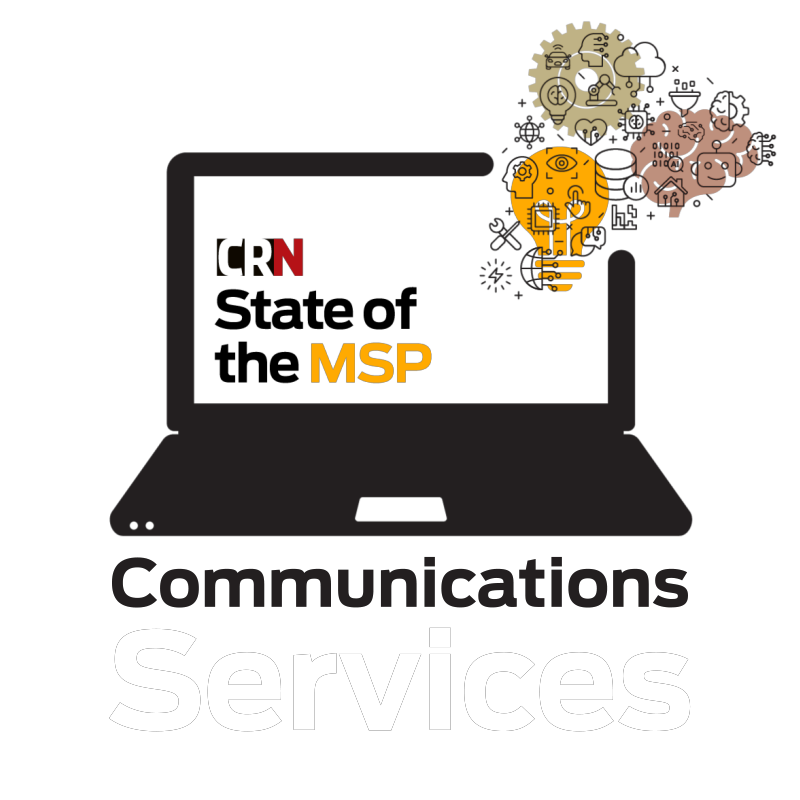

MSPs have come a long way from the days of managing PABX systems, but the evolution of their role isn't over yet. Managed communications business remains ripe for picking by MSPs with the right skills and communications products.
That’s because in 2023, the shift to cloud communications continues. And for organisations that have already moved communications to the cloud, that journey isn't over.
Moving up the stack

One of the biggest digital communication stories in recent years has been the widespread adoption of Microsoft Teams. For communication services providers, that story isn't over yet.
A land grab is underway, as one company told CRN Australia recently. Cloud communication providers are looking to bring organisations’ phone systems into Teams. But discounted trunk sales are a race to the bottom, they commented. in their view, what people need is to make customers stickier.
Managed communication providers are moving up the communications stack. They're taking advantage of a growing range of applications and services they can wrap around cloud voice, including such things as analytics, contact centre and voice recording.
While such integrations aren't new in contact centres, they're moving into other parts of customers' businesses. Modern tools are making these integrations easier.
“[Integration] is a lot easier than what it used to be in the old days with the traditional platforms. The custom-build APIs are key,” said Craig Sims, co-managing director of communications-focused MSP CCNA.
AI enabled features can also provide business value.
“There's a whole heap of transcriptions going on with a lot of these UC platforms. As calls are going in and out they're picking up key words and key conversations and providing user prompts back to customers and what they're looking to achieve out of a call. A lot of that's driven around AI at the moment, and we're seeing more and more of that,” Sims explained.
Technologies like AI and ML will become increasingly critical to the success of MSPs, according to senior principal analyst at Gartner, Jaideep Thyagarajan.
By 2025, he estimated that 35 percent of CSPs will deploy an AI platform to build their organisation-level analytics strategy, compared to five percent at the end of 2022.

He also predicted that by 2025, at least 40 percent of CSPs business as usual operations will be digitised and automated using AI and ML solutions, compared to 15 percent at the end of 2022.
“Adoption is certainly growing, from customer experience to energy efficiency, revenue assurance, fraud management…” Thyagarajan commented.
Tools that can increase efficiency could be useful in the current economic climate.
“Recession is definitely a looming threat, and that is sharpening accountability,” Thyagarajan said. “CSPs’ ability to battle inflation with price increases is no longer a feasible option given recession and consumer sentiment, making efficiency the utmost key driver and an immediate priority for CSPs to deliver their 2023 results.”
Productivity pitch
Partners are also using communications capabilities to enable customers to track indicators of employee productivity and measure the usage of technology, notes Convergecom’s Austin Payne.
To get the most out of working remotely, Payne’s customers want to easily connect remotely using an app on their mobile phone or laptop, in addition to a handset.
They also want tools to report on how many calls they're doing a day and the ability to easily transfer calls at home to another employee or another staff member, and reporting and recording, Payne said.

“That way, as a manager I can sit there and go, ‘What are my techs doing today?’ And I can have a look and see how many calls they've made, how many people they haven't spoken to or any missed calls they haven't got,” he said.
One of the biggest areas of growth Payne seen has been his client's need for security and resiliency.
“People are hesitant on where their data's sitting. So, data resiliency and sovereignty is probably a big one. Say, if we do reporting and recording, they don't want it stored offshore.”
Consultative approach

Technology skills shortages have also driven the need for MSPs that can step in and do more of the work that clients can't. Here's CCNA’s Craig Sims again.
“I think that's the biggest growing area that we're seeing at the moment. A lot of customers that had base level maintenance back four or five years ago are moving to managed services. That's chiefly around their ability to be able to bring in and maintain and have the appetite to continue doing that with the appropriate skill sets within their business,” Sims commented.
Perhaps even more importantly, MSPs are seeing a need for a stronger focus on the business outcomes of communications deployments.
Sims sees “more and more up set up and communications provided during the implementation. Rather than just a standard UC offering, there's a lot of business drivers that go into the deployments these days.”
“The biggest thing around managed communications is moving with the business and making sure that you're driving outcomes of the business. You need a consulting layer around that and that's the biggest thing about managed communications.”
“We see a lot of unified comms solutions out there at the moment, that are really put in and just thrown over the fence.”
MSP Champions
The CRN State of MSP Champions — NinjaOne and Pure Storage — work with MSPs to ensure IT buyers receive the most appropriate solutions and the highest service levels.
Watch their comments below about how MSPs can continue to thrive in the year ahead.








